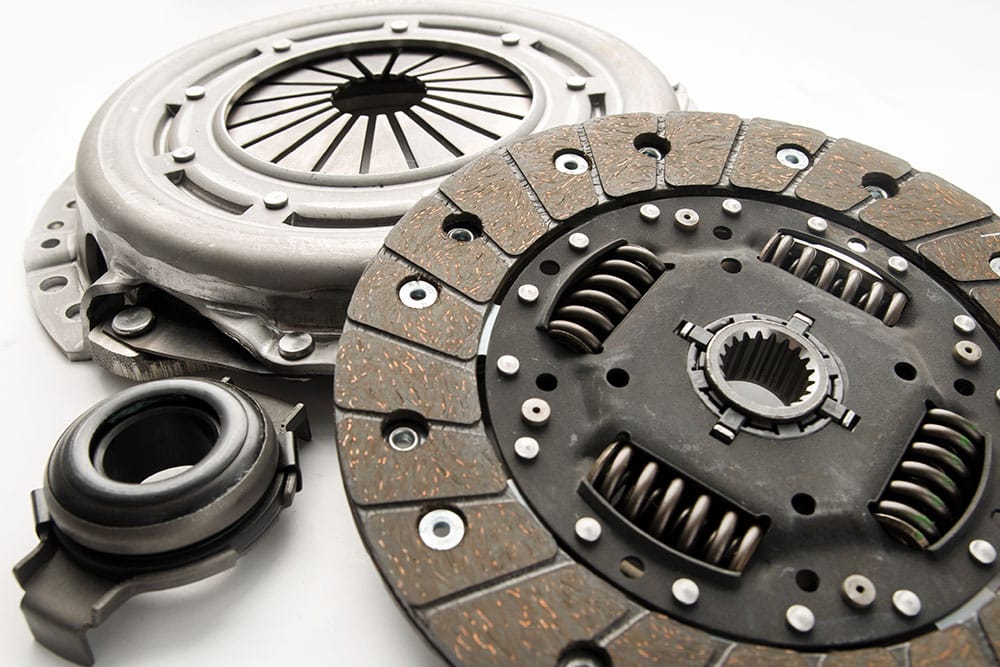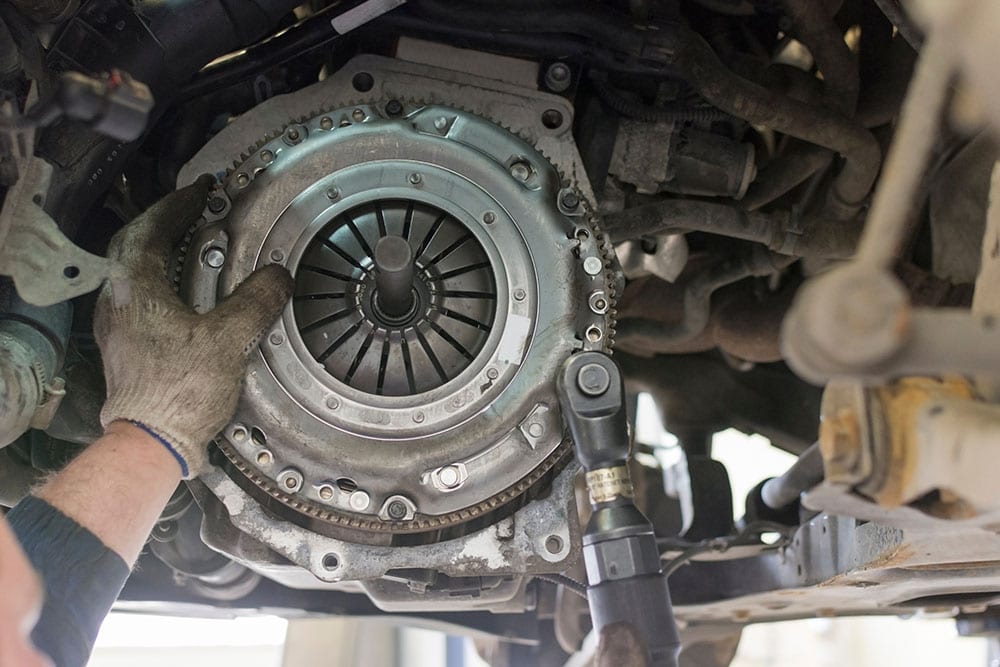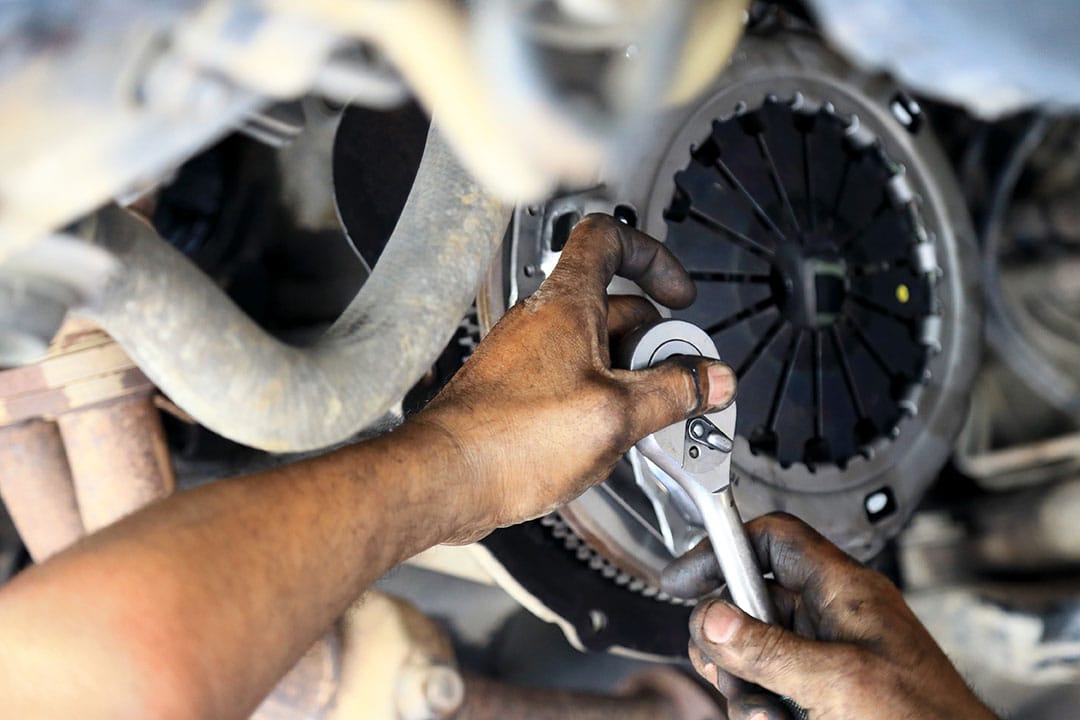How Much Does It Cost To Replace a Clutch in 2025? What You Need To Know!
-
Codee Chessher
- Last updated:

When your clutch goes out, you probably envision a mile-long mechanic bill. You can’t drive your car without a clutch, so you must get it fixed ASAP. If you’re unfamiliar with mechanic pricing and car parts, estimating what it’ll cost to fix can be challenging. Let’s check out why clutches are essential, how much they are to replace, and some other relevant info.
The Importance of a Clutch
If you’ve never driven a car with a manual transmission, you might not know what a clutch is or why it’s important. In manual transmission cars, the clutch is a third pedal you press to shift gears. The clutch helps you control the power sent to your wheels to stop as well as accelerate. In short, a clutch can cut power to the wheels without killing the engine.
Even cars with automatic transmissions have clutches, they control it automatically. These clutches are constructed a bit differently than manual clutches, with the main difference being that they’re attached to a torque converter that connects the wheels to the transmission and engine.

How Much Does It Cost To Replace a Clutch?
When your clutch conks out, you’re looking at a decent chunk of change to get it replaced. Depending on your car, you may pay upwards of $1,000 for parts and labor. Rear-wheel clutches are easier to access, so replacing them might not cost as much. Some factors that impact clutch replacement costs are the make and model of the car, how much you drive, the availability of replacement parts, and how much the mechanic charges for labor.
About half of the price will be labor and the other half parts. If more clutch components are worn or damaged, it might cost more. Here are the estimates of what it costs to replace the clutch of a few modern car models.
These are estimates, and you should only use them to get a general idea of the repair’s cost. We suggest you call several repair shops for more concrete estimates.
Additional Costs To Anticipate
If the flywheel has become worn, it should be replaced at the same time as the clutch because both components are located deep in the engine. Having the flywheel separately replaced can run you as much as double your original repair, so be sure to ask the mechanic to check out the flywheel and see if it needs to be replaced as well.
Replacing the flywheel with the clutch will run you between $500 to $700 on top of the clutch repair. Together, you’re looking at around $2,000.

How Often Should Clutches Be Replaced?
Most clutches need to be replaced every 60,000 to 100,000 miles. The more you drive, the more quickly the clutch will wear out. Also, the improper use of the clutch will accelerate wear and tear on the clutch. For instance, riding the clutch in heavy traffic will quickly wear down the clutch plate.
Common Clutch Problems
Just like your brakes have telltale signs that they’re getting worn and need to be replaced soon, there are signs that your clutch is getting worn out. If you ignore these signs, you risk damage to your transmission and safety.
Some of these are just early signs your clutch is wearing out, while others are signals you should immediately get your clutch replaced. You do not want to be driving when your clutch goes out, so keep a keen eye out for these signs.
- The clutch slips when you accelerate—A worn clutch is especially prone to slipping when driving uphill or carrying heavy cargo.
- If the clutch starts to raise your car higher, the hydraulic system can’t adjust the clutch—Bring your car in for repair ASAP, and do not drive anywhere else.
- The clutch feels soft or mushy underfoot—This is more common on old cars, but new cars see this issue when the clutch pressure plate gets worn. This isn’t an emergency sign, but you shouldn’t ignore it.
- When you press the clutch, a grinding noise indicates the pressure plate or bearing is damaged or defective—Take your car in as soon as possible.
- It’s getting harder to press the clutch and shift—This is more noticeable in manual transmissions, but in automatics, you can hear the car struggling to shift.

Tips To Keep Your Clutch In Good Shape
While clutches will eventually wear out no matter what you do, there are several tips you can use to prolong their lifespan. Below, we’ll detail how to be kind to your clutch and keep it from wearing out prematurely.
- Don’t ride the clutch, no matter how heavy the traffic is. Riding the clutch increases friction and heat, which reduces the clutch’s lifespan.
- Sometimes, people “slip” the clutch on purpose when hauling heavy cargo to gain forward momentum. This produces a ton of heat on the clutch and should be avoided at all costs.
- Don’t rest your left foot on the clutch when you’re not using it. Even the lightest touch can engage the clutch mechanism, so it’s best to keep your foot on the floor when you don’t need it.
- The clutch can get soft or mushy when air builds up in the hydraulic fluid. To prevent that, regularly bleed the air from the clutch. The hydraulic fluid should be topped off at the same time.
Conclusion
No motorist wants to hear that they must bring their car in for repairs, but clutch replacements are inevitable. Failing to replace the clutch can cause other components to fail and cause an accident. To keep the clutch performing as long as possible, follow the tips provided above. Being kind to your clutch will keep it in great shape for a long time to come.
- See Also: 8 Manual Transmission Statistics
Featured Image Credit: BACHTUB DMITRII, Shutterstock
Contents


